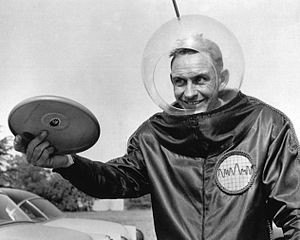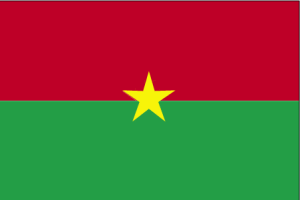First US Satellite Explorer I was launched in 1958, four months after Sputnik 1 and Sputnik 2 were sent into space. It returned data, including confirmation of the Van Allen Radiation Belts, to the United States for four months until the batteries died. More than 90 more Explorer projects followed. Children could view a table of all the Explorer projects at: Explorer Projects.
Ford Motor Company, in 1958, produced its 50 millionth car, the Thunderbird.
General Motors, in 1968, produced its 100 millionth car, the Oldsmobile Toronado.

The Half Safe and the Statue of Liberty
Ben Carlin in 1958 became the one and only person to circumnavigate the world in an amphibious vehicle. He and his wife Elinor started the trip in the last part of 1947 aboard the Half-Safe, a former military amphibious vehicle. After several tries, they reached Morocco in 1951. Elinor flew to the United States, and Carlin found other mates to continue his voyage. Pausing to earn funds and repair the vehicle, he returned to Montreal in 1958. After Carlin’s death, the Half-Safe was deeded to his school in Australia, the Guildford Grammar School.
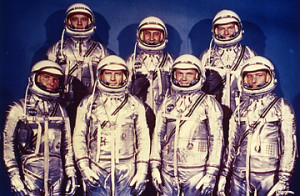
Mercury Seven Astronauts
National Aeronautics and Space Administration (NASA) was created in 1958 when President Eisenhower signed the act. The Mercury Seven were the first group of astronauts. The number of astronauts peaked at 149 in the year 2000. Currently 41 active astronauts serve our country. Children can learn more at: NASA.
Frisbee was patented in 1958 by Walter “Fred” Morrison. He received patent number 183,626 for his “Flying Toy.” For a time he called the toy the Pluto Platter. Older children could experiment with the physics of a Frisbee at: Frisbee. They could create a Frisbee course in the backyard or on the playground.
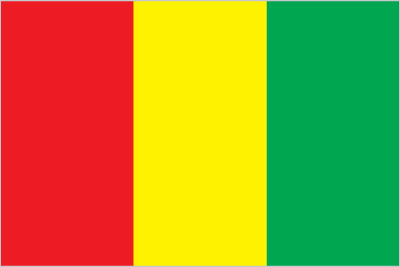
Flag of Guinea
Guinea celebrates Independence Day. France relinquished control in 1958. Located in western Africa, the land was the site of ancient caravan routes. The country is slightly bigger than the state of Utah, and Conakry is the capital. About eleven million people live in Guinea. Children could learn more at: Guinea.
Burkina Faso celebrates Republic Day. In 1958 the Republic of Upper Volta became a self-governing colony of France. Eventually the country changed its name to Burkina Faso and became independent of France. Slightly larger than the state of Colorado, this African country is landlocked. Its land is mostly flat, and its climate is tropical. Over eighteen million people live in Burkina Faso, and Ouagadougou is the capital. Older children can learn more at: Burkina Faso.
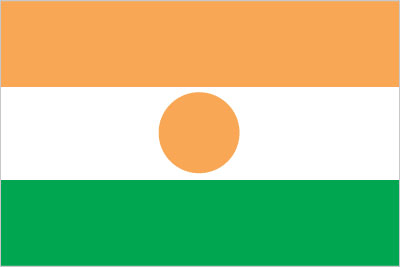
Flag of Niger
Niger celebrates Republic Day. It became a republic in 1958 before it became free of French control in 1960. This landlocked country, located in north central Africa, is a bit less than twice the size of Texas. Niger is mostly covered with deserts and mountains. Almost seventeen million people live in Niger, and Niamey is the capital. Older children can learn more at: Niger.
